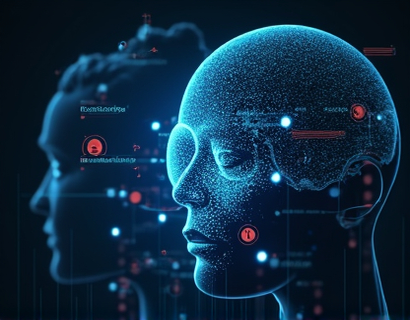AI-Powered Knowledge Interface: Transforming Learning for Professionals, Students, and All
The advent of AI-powered knowledge interfaces has revolutionized the way professionals, students, and learners of all ages access and interact with specialized insights and educational content. These cutting-edge platforms leverage artificial intelligence to deliver accurate, verified, and safe information, catering to diverse needs and ensuring a secure learning environment. This article delves into the features and benefits of such platforms, focusing on their applications for professionals, students, and educational institutions, while emphasizing the importance of safety and reliability in educational tools.
Specialized Insights for Professionals
For professionals across various industries, staying updated with the latest trends, research, and best practices is crucial for career growth and maintaining competitiveness. An AI-powered knowledge interface designed for professionals offers a wealth of specialized insights tailored to their specific fields. This platform can provide real-time updates on industry developments, in-depth analyses of market trends, and expert opinions on emerging technologies and methodologies.
The AI-driven nature of these interfaces ensures that the content is not only comprehensive but also curated to meet the user's level of expertise and interests. For instance, a software developer might receive detailed explanations of new programming languages, while a healthcare professional could access the latest research papers and clinical guidelines. The platform's ability to understand and adapt to the user's professional context makes it an invaluable resource for continuous learning and professional development.
Educational Content for Students
Students at all educational levels—from primary school to university—can greatly benefit from AI-powered knowledge interfaces. These platforms offer a safe and enriching learning environment, providing access to a vast array of educational content that is both accurate and engaging. For younger students, the content can be tailored to their age and learning level, incorporating interactive elements such as quizzes, games, and multimedia resources to enhance understanding and retention.
For higher education students, the platform can serve as a comprehensive research tool, offering in-depth articles, academic papers, and expert analyses on various subjects. The AI can assist students in finding relevant resources, summarizing complex topics, and even providing personalized study plans based on their progress and areas of focus. This level of personalized support helps students stay on track with their studies and achieve their academic goals more effectively.
Safe Learning for All
Ensuring a safe learning environment is paramount, especially for children and young students. An AI-powered knowledge interface can be designed with robust safety features to protect users from inappropriate content and online risks. Content verification is a critical component of such platforms, ensuring that all information provided is accurate, up-to-date, and free from harmful or misleading material.
The platform can employ advanced filtering and monitoring systems to continuously assess and refine the content library. This includes regular audits by human moderators and automated checks to identify and remove any unsafe content. Additionally, the interface can be configured to restrict access to certain topics or features based on the user's age and maturity level, further enhancing the safety of the learning experience.
Child-Friendly Version
Recognizing the unique needs of younger learners, a child-friendly version of the AI-powered knowledge interface can be developed. This version would feature a simplified user interface, age-appropriate language, and interactive elements that make learning fun and engaging. The content would be carefully curated to align with educational standards and curricula, ensuring that children receive a solid foundation in various subjects.
Parental controls can be integrated to allow guardians to monitor and manage their child's learning experience, setting preferences for content types, learning goals, and usage limits. This level of control reassures parents and educators that children are accessing safe and educational content while enjoying the benefits of interactive learning.
Benefits for Educational Institutions
Educational institutions, including schools and universities, can greatly benefit from integrating AI-powered knowledge interfaces into their curriculum and resources. These platforms can serve as supplementary tools to enhance the learning experience, providing students with additional resources and support outside the classroom.
For educators, the platform can be a valuable tool for professional development, offering access to the latest teaching methodologies, research findings, and best practices in education. The AI can also assist in creating customized lesson plans, identifying gaps in student understanding, and suggesting targeted interventions to improve learning outcomes.
Moreover, the platform's ability to provide real-time data and analytics can help institutions assess the effectiveness of their educational programs and make data-driven decisions to improve their offerings. This holistic approach ensures that both students and educators benefit from a dynamic and supportive learning ecosystem.
Interactive Knowledge Base
At the core of an AI-powered knowledge interface is a comprehensive and interactive knowledge base. This database is continuously updated with new content, ensuring that users have access to the most current and relevant information. The AI can facilitate seamless navigation through the knowledge base, allowing users to search for specific topics, browse by category, or explore related content based on their interests.
The interface can also support advanced search functionalities, such as natural language processing, to understand and respond to complex queries. For example, a user might ask, "What are the recent advancements in artificial intelligence and their potential impact on the job market?" The AI would provide a detailed response, including key points, supporting data, and references to authoritative sources.
Personalized Learning Experiences
One of the most significant advantages of AI-powered knowledge interfaces is their ability to offer personalized learning experiences. By analyzing user interactions, preferences, and performance, the AI can tailor the content and learning path to each individual's needs. This personalization ensures that users receive information that is relevant and challenging, promoting deeper engagement and better learning outcomes.
For instance, a professional looking to upskill in data analysis might start with introductory materials and gradually progress to more advanced topics based on their progress. The AI can identify areas where the user excels and those that require more attention, adjusting the content accordingly. This adaptive approach not only enhances the learning experience but also helps users achieve their goals more efficiently.
Community and Collaboration Features
To foster a sense of community and encourage collaboration, the AI-powered knowledge interface can include features that connect users with similar interests and professional backgrounds. Discussion forums, group projects, and peer review mechanisms can be integrated to facilitate knowledge sharing and collaborative learning.
These features allow users to ask questions, share insights, and engage in meaningful discussions with peers and experts. Moderation tools ensure that the community remains a safe and respectful space, encouraging open and constructive dialogue. For students, this can be particularly beneficial, as it provides opportunities to learn from classmates and build a network of like-minded individuals.
Accessibility and Inclusivity
Ensuring that the knowledge interface is accessible to all users, regardless of their abilities or technological proficiency, is essential. The platform can be designed with accessibility in mind, incorporating features such as text-to-speech, adjustable font sizes, and high-contrast modes to accommodate users with visual impairments. Additionally, support for multiple languages can make the platform more inclusive, reaching a broader audience and breaking down language barriers.
For users with cognitive or learning disabilities, the AI can offer customized interfaces and learning aids, such as step-by-step instructions, visual aids, and interactive tutorials. This inclusive approach ensures that everyone has the opportunity to benefit from the platform's resources and contribute to the learning community.
Conclusion
AI-powered knowledge interfaces represent a significant advancement in the way we access and interact with educational content. By providing specialized insights, ensuring content verification, and offering safe and personalized learning experiences, these platforms cater to the diverse needs of professionals, students, and educational institutions. As technology continues to evolve, the potential for AI to enhance learning and professional development is vast, making these interfaces an indispensable tool for anyone seeking to expand their knowledge and skills in a secure and supportive environment.










































